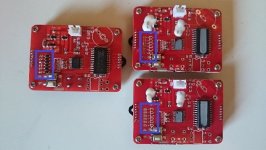DudeeBalls said:
The guy in this
youtube also uses an interesting little lcd BMS meter but doesn't look as detailed as the other. I hope I can find a cheap semi bulk source for those 18650 spacers/holders that I've seen used here and there on some youtube's and elsewhere cause they seem like they'd make changing out a bad cell a 100 times easier than using hot glue.
Hi, I'm that guy :lol:
I also made that battery in the picture with the green LCD meter below the BMS (just standard 30A greentime BMS). That battery meter is the same in both the video and the battery picture (
https://www.electricbike.com/wp-content/uploads/2015/03/BatteryDIY10.png) , and has nothing related to the BMS, it is just installed next to that BMS board.
The battery meter is in essence a voltmeter with preconfigured modes (12v, 24v. 36v, 48v, SLA and 2s to 15s lithium-ion measurements) that you can configure with two small buttons on the PCB. There are also 6 extra functions you can configure (3 of them installing a small momentary button in the hole behind the lcd) soldering (bridge) two spots near each function indicated on the PCB.
If you buy, and you want to use the extra functions F1 to F6, you must be sure the PCB has behind the electronics soldered for the functions. Because there are boards that has not soldered fundamental parts to work (so just work as metering with the elemental battery type and voltage, and you need to add a switch to Off and On the meter)
 left meter can have F1, to F6 functions spots iron soldered and bridged to make them work, meters on the right side DON'T have F1, to F6 functions installed
left meter can have F1, to F6 functions spots iron soldered and bridged to make them work, meters on the right side DON'T have F1, to F6 functions installed
This is the battery meter:
http://www.aliexpress.com/item/DC-12V-48V-48V-36V-24V-Lead-ACID-Lithium-Battery-Capacity-Tester-Monitor-Meter-LiIon-Battery/32273493343.html
These are the full specifications and functions explained:
https://drive.google.com/open?id=0B8UWKkPeL6BbVXlIUUJrRkV5aGs
PS: I've used a bunch of those 10S 30A (~20A real) BMS's on your main post, They are basic, but really fail-proof, and I can confirm it has balancing function working perfectly. Just needed to be cautious when soldering the wires to the PCB, small space.